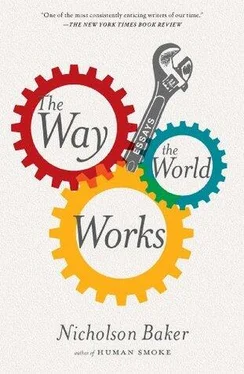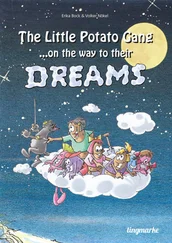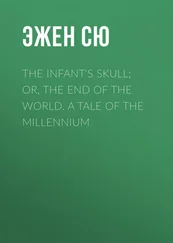Nicholson Baker - The Way the World Works
Здесь есть возможность читать онлайн «Nicholson Baker - The Way the World Works» весь текст электронной книги совершенно бесплатно (целиком полную версию без сокращений). В некоторых случаях можно слушать аудио, скачать через торрент в формате fb2 и присутствует краткое содержание. Год выпуска: 2012, Издательство: Simon & Schuster, Жанр: Публицистика, Критика, на английском языке. Описание произведения, (предисловие) а так же отзывы посетителей доступны на портале библиотеки ЛибКат.
- Название:The Way the World Works
- Автор:
- Издательство:Simon & Schuster
- Жанр:
- Год:2012
- ISBN:нет данных
- Рейтинг книги:4 / 5. Голосов: 1
-
Избранное:Добавить в избранное
- Отзывы:
-
Ваша оценка:
- 80
- 1
- 2
- 3
- 4
- 5
The Way the World Works: краткое содержание, описание и аннотация
Предлагаем к чтению аннотацию, описание, краткое содержание или предисловие (зависит от того, что написал сам автор книги «The Way the World Works»). Если вы не нашли необходимую информацию о книге — напишите в комментариях, мы постараемся отыскать её.
), here assembles his best short pieces from the last fifteen years.
The Way the World Works
OED
Modern Warfare 2
Through all these pieces, many written for
, and
, Baker shines the light of an inexpugnable curiosity.
is a keen-minded, generous-spirited compendium by a modern American master.
The Way the World Works — читать онлайн бесплатно полную книгу (весь текст) целиком
Ниже представлен текст книги, разбитый по страницам. Система сохранения места последней прочитанной страницы, позволяет с удобством читать онлайн бесплатно книгу «The Way the World Works», без необходимости каждый раз заново искать на чём Вы остановились. Поставьте закладку, и сможете в любой момент перейти на страницу, на которой закончили чтение.
Интервал:
Закладка:
The last thing I did before I got in bed was to put a computer disk between the two halves of my wallet so that I wouldn’t forget to take it with me to Phoenix, Arizona, where I was going the next morning to watch a friend get married to a tall woman who had appeared in a Jeep commercial. I went to sleep fondling my wife’s engagement ring.
Now, several months later, the bathroom is built. The strips of masking tape, which we didn’t bother to peel up when we finished our architectural planning that evening, have become ineffaceably baked onto the gray planks of the back deck. They are, in fact, the only tangible remains of that particular day.
(1994)
Sunday at the Dump
It’s a Sunday afternoon in South Berwick and I’m at the dump, sitting in a white plastic lawn chair. Dump days are Wednesday, Saturday, and Sunday; most people go on Sunday afternoons. The busiest time is just before six, when the dump closes: if you come too late, you’re stuck with your trash until Wednesday, and when Wednesday comes around you’re likely to forget. There are no garbage trucks in our town — everyone must make an appearance here. Just before election day, candidates for local office show up to shake hands and campaign — only here at the dump does a candidate have a chance of meeting a voter from every household. Many residents hardly set foot in the little stores on Main Street; they don’t use the post office much; they shop for groceries in supermarkets across the border in another state; their children are bused to school. But everybody comes to the dump. “We get more business here than town hall,” Jim told me. Jim is the dump’s manager — a stocky man in his twenties with a deep sunburn. When I had been sitting in my white plastic chair for about half an hour, in a shady place to one side of the parking lot, Jim came over to be sure I wasn’t trying to drop off some illegal toxic material in the bushes. I told him I was writing about the dump, because most people are happy when they come here. In fact, I’m smiling now, as I type this sentence, looking out at the sunlit cars and trucks, and the long rectilinear containers, each accepting a different kind of refuse. There is a beautiful red container, freshly painted, the size of a caboose, with a ladder up its side; in front of it there is a sign that says “Shingles Only.”
Though we call it a dump, technically it isn’t one: it used to be a landfill. Behind the main building there is a steep man-made hill, covered with yellow wildflowers, with two T-shaped structures poking up from it. These are vents; they release trapped gasses from the heap. Now all the trash that we bring goes in trucks to the nearby town of Biddeford, where they burn it. Biddeford residents complain of the smell; for unknown reasons, Biddefordians sited their incinerator in the center of town. I told Jim the Manager that our dump was looking very clean these days. When Jim took over a year ago, the place was a mess; now everything’s in order, and there’s no smell. “Every night we clean out all the recycling cans with a mixture of Simple Green, bleach, and water,” Jim said. “We don’t get any bees. When I got here, there were a lot of bees.”
Agamenticus Road is the way to the dump. Agamenticus is the name of a mountain nearby; there are rare plants that grow only on Mount Agamenticus, but I’ve never seen them. There is a pile of rocks on top of Mount Agamenticus, too. Indians supposedly had a tradition of commemorating a sacred burial site by arranging a large pile of rocks; now visitors to the mountain bring their rocks as well. I’ve been to the top of Mount Agamenticus once; I’ve been to the dump hundreds of times, often with my son. You take a right at the Civil War statue onto Agamenticus Road; you drive past some houses and a cemetery; and then, just after the ice cream stand and potted plant store, you take a left and you’re in a paved area in front of the dump’s main building, a brown shed. Next to it is a yawning opening — a sort of double-high garage door — into which people toss their clear bags of trash. One of the pleasures here is in throwing: today I flung each bag underhand, so that it had a final airborne moment of multicolored spin before it fell into the compaction pit. Sometimes I overturn the whole garbage can (which I’ve brought in the back of my van) and shake out its contents, holding it high over my shoulder: the bags emerge slowly, hissing slightly, held by the vacuum I created several days earlier when I stuffed the bags down into the can in order to close the lid. The bags holding regular trash must be transparent, so that the dump attendants can verify that you’re not throwing in something forbidden, like cat litter. Cat litter goes into another enormous container separate from the main one, a receptacle entirely devoted to mattresses, old couches, and cat litter.
There are three windows in the main building — one window is labeled “Brown,” one says “Green,” and one says “Clear.” Formerly the windows were fitted with swinging flaps of Plexiglas, but the flaps have been removed now — an improvement. Into these windows we throw bottles and jars. When the bottles fall into the bins on the other side of the swinging flaps (or where the swinging flaps were when there were flaps), the clinks they make are painfully loud. When the bottles break it’s a relief: shattering is noticeably less noisy than intact clinking. Why? Perhaps because some of the kinetic energy is used up in the breakage, and there are no broken inner bottle-hollows to muffle the radiating noise.
Down a slope and to the left of the main building are two dark-green containers, each the size of a mobile home. One holds newspapers and magazines, and one holds cardboard. You can flip pizza boxes like Frisbees into the container for cardboard, hoping to lodge them at the top of the pile, way back in the shadows. Often the boxes slide back out again. I took several bags of newspapers into the newspaper-and-magazine bin. There is a partition up half-way back, to hold the four-foot-high tide of paper from pouring forward. It’s hushed and warm deep in this news-vessel; the shiny advertising inserts make slushy whispering noises as you release them from the bag.
The most exciting place in the dump is the little shack with a cement floor and a sign over it saying “Swap Shop,” where people leave their serviceable junk. Today at the Swap Shop I noticed three toasters, two toaster ovens, a bike, a textbook of surgery, many pairs of shoes, two tape recorders, and an infant’s car seat. A man with a large, high stomach dropped off a green and white poolside chair that he had no use for; half an hour later I saw a grandmother walking off with it, while her grandson left with a toy parking garage.
My son and my wife once brought me home a bicycle from the Swap Shop: it has two flat tires, but it’s otherwise in good shape. Another time we found a pair of antique sleds there. Our friends the Remicks have gotten a treadmill, several extension cords, and an outdoor cooker, all from the Swap Shop. My prize was a complete set of the Golden Book Encyclopedia, with trompe l’oeil paintings on the covers — my beloved childhood encyclopedia. Since then, I’ve seen several more sets of this encyclopedia here — I suppose families must be getting rid of their copies all over the country at the moment. This afternoon, I selected a fifties paperback of Lao Tzu and a book about Czechoslovakia in 1968. (Lao Tzu says: “Rule a large country as small fish are cooked.”) The bookshelves are in the back of the shed — sometimes I take a strange pleasure in straightening up the rows of Reader’s Digest Condensed Books.
Now a woman of eighty or so, with a fresh white perm, is walking with stocky but sometimes unsteady steps toward the dump-mouth. She is wearing blue easy-care pants and carrying a small clear bag of tidy aged-person’s garbage. She tosses the bag in, watching it take its place in the pit among everyone else’s contributions. Maybe it’s the clearness of the bags that makes the dump seem like a place of confidences — everyone can see just what everyone doesn’t want.
Читать дальшеИнтервал:
Закладка:
Похожие книги на «The Way the World Works»
Представляем Вашему вниманию похожие книги на «The Way the World Works» списком для выбора. Мы отобрали схожую по названию и смыслу литературу в надежде предоставить читателям больше вариантов отыскать новые, интересные, ещё непрочитанные произведения.
Обсуждение, отзывы о книге «The Way the World Works» и просто собственные мнения читателей. Оставьте ваши комментарии, напишите, что Вы думаете о произведении, его смысле или главных героях. Укажите что конкретно понравилось, а что нет, и почему Вы так считаете.












